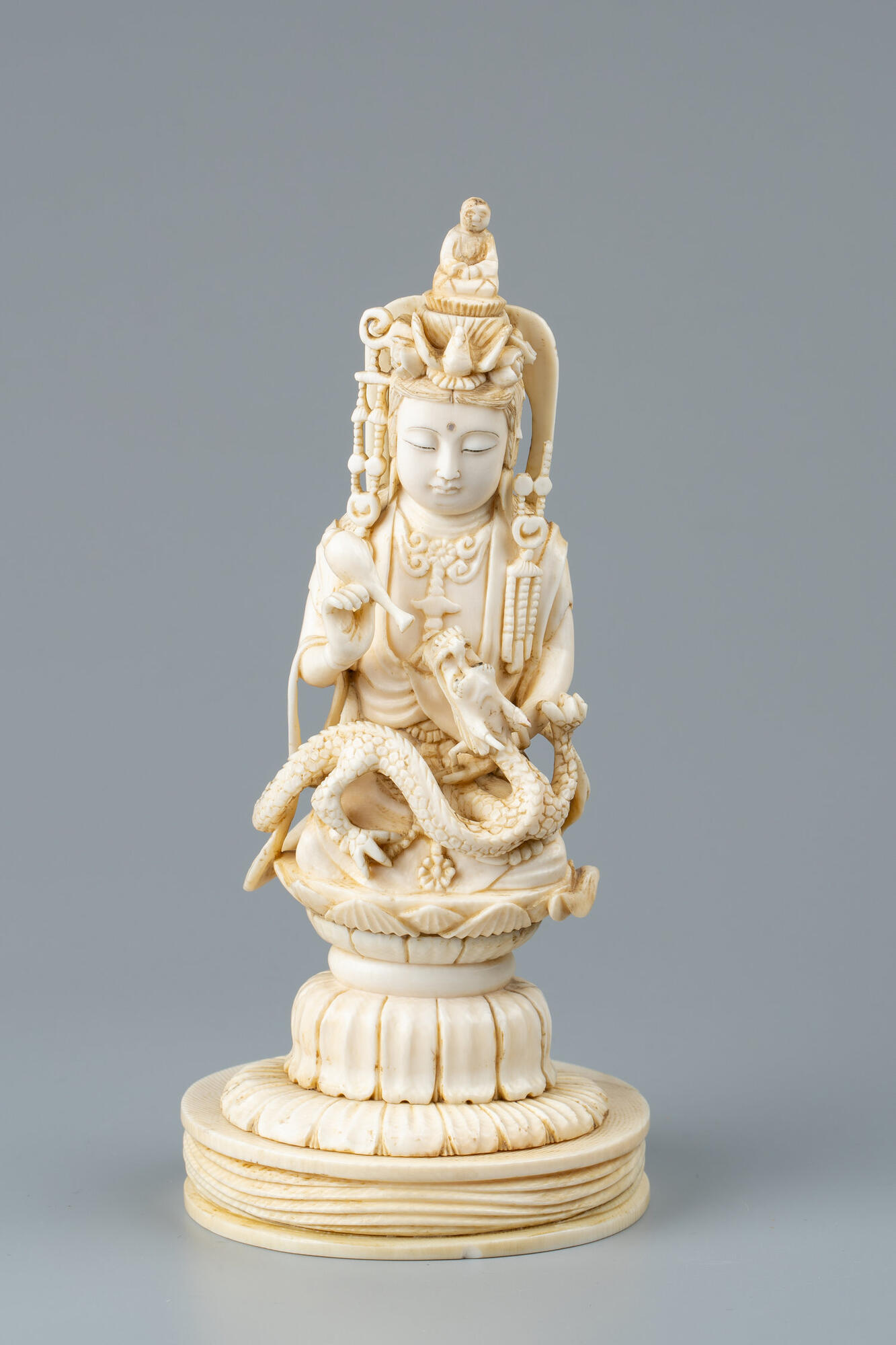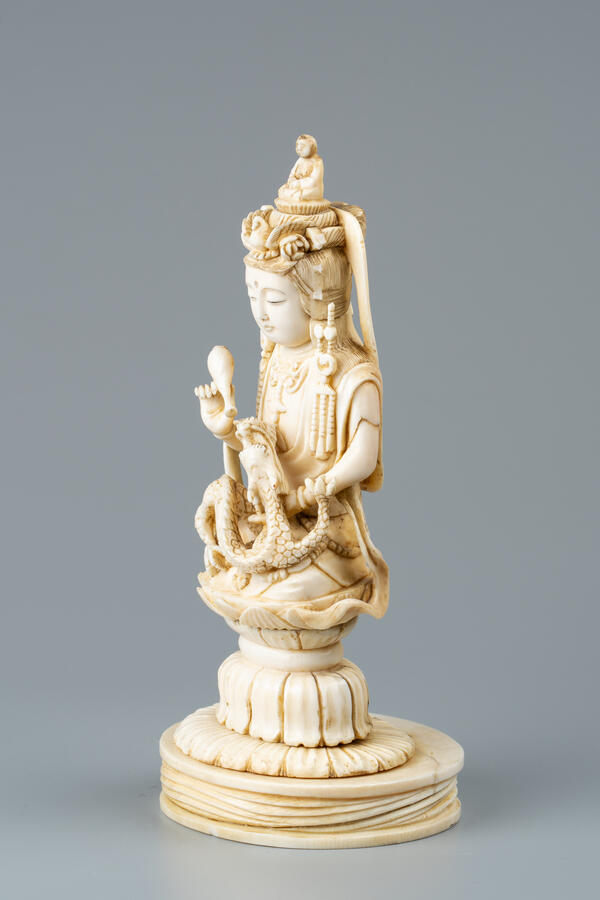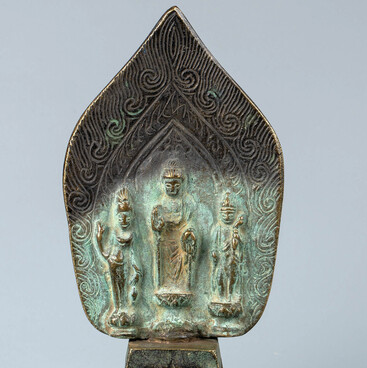A small elegant statuette of the goddess Kannon was transferred to the Samara Regional Art Museum from the collection of the Samara industrialist, founder of a brewery and collector Alfred Filippovich von Vacano.
The figurine is made of bone and belongs to a type of Japanese works of decorative and applied arts called okimono. Such statuette was used as an interior decoration.
The goddess Kannon (literally the one who “perceives the sounds of the world”) is a Buddhist deity, the protector of all sufferers, and the personification of mercy. The image of Kannon came to Japan from China along with the Buddhist teachings. The goddess of mercy in many ways resembles the equally merciful and kind Jizo (a revered bodhisattva), since both of them renounced the bliss of nirvana in order to bring peace and happiness to others. However, Kannon is a much more complex deity than Jizo. Although she is most often depicted as a beautiful and righteous Japanese woman, there are many different interpretations of her appearance. Like other multi-armed Indian deities, Kannon is sometimes depicted as Senju Kannon — the Thousand-armed Kannon. In fact, Kannon has only 40 hands even in this version. She holds an object in each hand, as if hinting that out of love she is ready to give everything and answer everyone’s plea.
The goddess from the Samara Museum collection is depicted sitting on a lotus and feeding a dragon from a vessel. The artist meticulously worked out all the details, including the goddess’s costume, which shows how skillful the artist was in ivory carving.
It is believed that Kannon taught people to grow rice, which became nutritious because she had filled every grain with her own milk. The goddess came to help if the threat came from water, demons, fire or sword. As a symbol of samsara, the endless circle of earthly existence, she stood on a rock in the midst of raging waves and rescued the shipwrecked. Kannon had the ability to free prisoners from chains, deprive snakes of their poison and the lightning of its power. She could also cure all diseases. In addition, those who want to have children turn to her. People often place images of this popular goddess in their homes. The holidays in honor of her birth and Enlightenment play an important role in Buddhism.
The figurine is made of bone and belongs to a type of Japanese works of decorative and applied arts called okimono. Such statuette was used as an interior decoration.
The goddess Kannon (literally the one who “perceives the sounds of the world”) is a Buddhist deity, the protector of all sufferers, and the personification of mercy. The image of Kannon came to Japan from China along with the Buddhist teachings. The goddess of mercy in many ways resembles the equally merciful and kind Jizo (a revered bodhisattva), since both of them renounced the bliss of nirvana in order to bring peace and happiness to others. However, Kannon is a much more complex deity than Jizo. Although she is most often depicted as a beautiful and righteous Japanese woman, there are many different interpretations of her appearance. Like other multi-armed Indian deities, Kannon is sometimes depicted as Senju Kannon — the Thousand-armed Kannon. In fact, Kannon has only 40 hands even in this version. She holds an object in each hand, as if hinting that out of love she is ready to give everything and answer everyone’s plea.
The goddess from the Samara Museum collection is depicted sitting on a lotus and feeding a dragon from a vessel. The artist meticulously worked out all the details, including the goddess’s costume, which shows how skillful the artist was in ivory carving.
It is believed that Kannon taught people to grow rice, which became nutritious because she had filled every grain with her own milk. The goddess came to help if the threat came from water, demons, fire or sword. As a symbol of samsara, the endless circle of earthly existence, she stood on a rock in the midst of raging waves and rescued the shipwrecked. Kannon had the ability to free prisoners from chains, deprive snakes of their poison and the lightning of its power. She could also cure all diseases. In addition, those who want to have children turn to her. People often place images of this popular goddess in their homes. The holidays in honor of her birth and Enlightenment play an important role in Buddhism.





